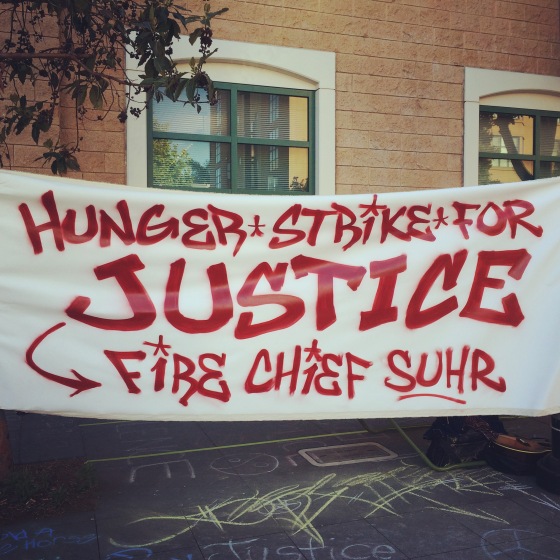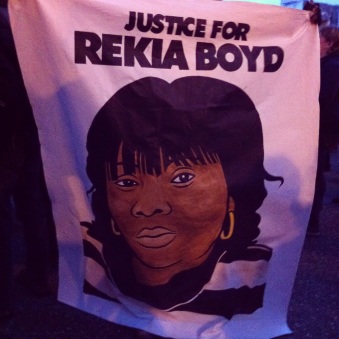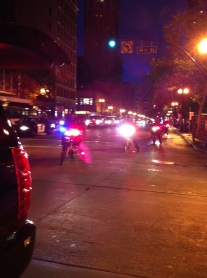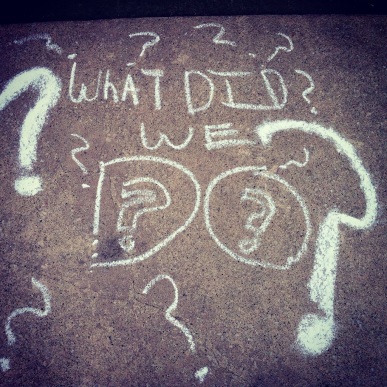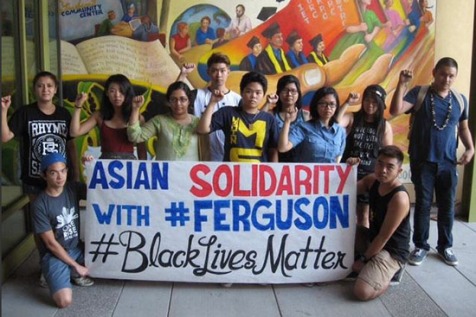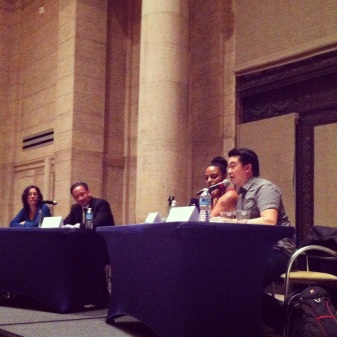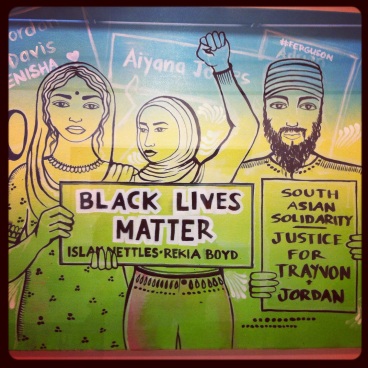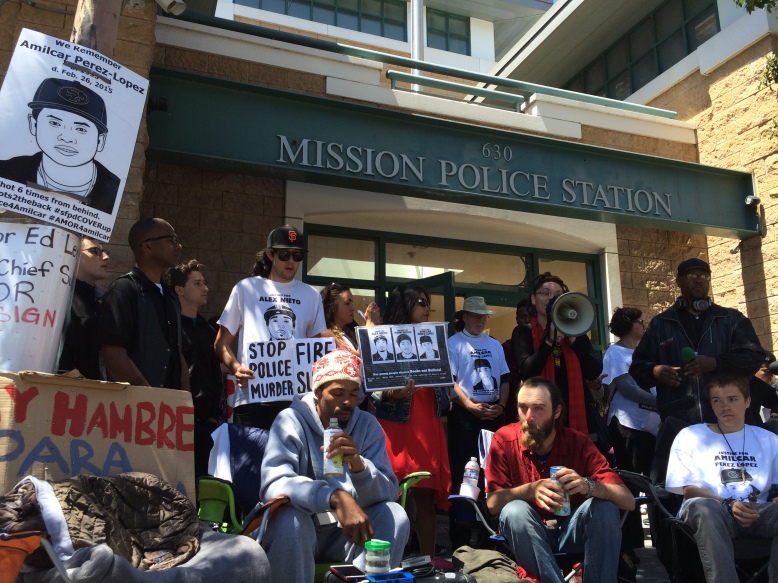 If anyone is still following this blog, I am back! Soon after starting this blog in February 2015, I joined #Asians4BlackLives activist group and delved into a year of direct action focused on supporting Black liberation and leadership. It was a very busy year and I hope to recap some of the highlights in upcoming blog posts, but first I want to write about this very crucial moment happening right now in the Bay Area. It is almost exactly a year since my last post which was on the national day of action called #SayHerName that aimed to bring attention to the many Black women and transwomen who are victims of racist/sexist/transphobic violence, but are often made invisible in the media and in conversations on racist police brutality. Thursday, May 19 was this year’s day of action for #SayHerName and it was an intensely bittersweet day in San Francisco. That morning in the Bayview (one the few remaining Black neighborhoods in San Francisco) a 27-year-old pregnant Black woman named Jessica Williams was shot and killed by the SFPD. Reports say she may have stolen a car, but was driving away from the police officers when they shot her. Just an hour or so before community members gathered outside SF City Hall at 5pm to address this loss, SF Chief of Police Greg Suhr was asked to resign.
If anyone is still following this blog, I am back! Soon after starting this blog in February 2015, I joined #Asians4BlackLives activist group and delved into a year of direct action focused on supporting Black liberation and leadership. It was a very busy year and I hope to recap some of the highlights in upcoming blog posts, but first I want to write about this very crucial moment happening right now in the Bay Area. It is almost exactly a year since my last post which was on the national day of action called #SayHerName that aimed to bring attention to the many Black women and transwomen who are victims of racist/sexist/transphobic violence, but are often made invisible in the media and in conversations on racist police brutality. Thursday, May 19 was this year’s day of action for #SayHerName and it was an intensely bittersweet day in San Francisco. That morning in the Bayview (one the few remaining Black neighborhoods in San Francisco) a 27-year-old pregnant Black woman named Jessica Williams was shot and killed by the SFPD. Reports say she may have stolen a car, but was driving away from the police officers when they shot her. Just an hour or so before community members gathered outside SF City Hall at 5pm to address this loss, SF Chief of Police Greg Suhr was asked to resign.
This was a major win for the people because community activists had been working very hard, especially in the last few months, to #FireChiefSuhr. #Justice4MarioWoods coalition, #Last3Percent, #Justice4AlexNieto and other local activists groups had been putting pressure on Mayor Ed Lee to fire Suhr, and after a culmination of some devastating community news (including the murder of unarmed Bayivew resident Mario Woods this past December, the non-indicment of the police officer who killed Alex Nieto in Bernal Heights, and the recent murder of a homeless immigrant Luis Gonogora in the Mission), five San Francisco activists (Ike Pinkston, Edwin Lindo, Maria Gutierrez, Sellassie Blackwell, and Ilyich “Equipto” Sato) joined together to take a stand against racist police brutality and went on a hunger strike on . #Hunger4Justice strike began on April 21 and lasted 16 days, as these 5 activists who became known as the #Frisco5 sat outside the Mission police station day and night, refusing solid foods until Suhr was fired or resigned.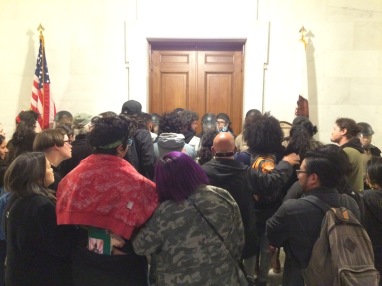
The community came together to support these five brave activists and on Tuesday May 3rd thousands of Bay Area people came out to march with the #Frisco5 to SF City Hall to demand that Mayor Ed Lee #FireChiefSuhr; but Lee was not there to talk with the people. Even after all 5 activists were hospitalized, Mayor Lee said he would continue to support Suhr. That week multiple groups continued to show up at City Hall and demand the changes they wanted to see, culminating in a shutdown of City Hall on Friday May 6th. That day activists peacefully protested outside Mayor Lee’s office, singing songs of unity and freedom and demanding justice. But on our way out of City Hall, a police officer attacked a high school boy and the crowd became riled up and decided to stay and hold space in the lobby of City Hall. The night grew long, but the people remained strong and truly supported each other (I saw people literally feeding the people on the front line whose arms were linked with each other). Finally around 9:30pm, the police became more aggressive, and with their full riot gear on, they began pushing the people out of the building, first slowly and then quickly and with full force. Many people were injured, including myself, and about 15 people were arrested.
Soon after this intense night, the #Frisco5 decided to end their hunger strike, but of course not their fight against police brutality. Now with many people inspired and mobilized by the #Frisco5’s sacrifices, the movement had grown to what became known as the “#Frisco500” and even city supervisors and other officials began to also put pressure on Mayor Lee to fire Suhr. Protests outside City Hall continued, and finally last Thursday, after the killing of Jessica Williams in Bayview, Lee asked Suhr to step down. It was an exciting moment demonstrating the power of the people, yet it unfortunately came at the loss of Williams and many other SF residents who were murdered by the police in SF. The #Frisco5 and other activists stated that though this battle against Chief Suhr is won, the war is not over and they will not stop until there are real systematic and cultural changes. Though there is still much more work to do to end the war on Black and Brown people, I am very inspired by the #Frisco5 who not only put their own lives on the line for justice, but also mobilized a local movement in this city, bringing together a wide spectrum of people together for this fight. Seeing so many people come out in solidarity reminds me that San Francisco is not completely lost to the gentrification tech boom, that there are still folks who care about this community and are willing to fight for it.
